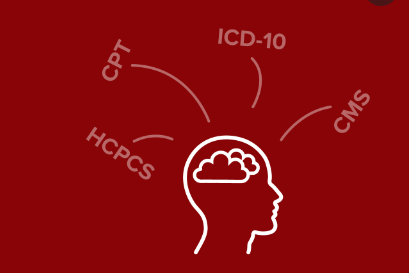MIPS 1: Introducing MIPS to Physical Therapy Clinics

Introduction
We’re happy to announce a blog series dedicated to MIPS. The first post in this series is called Introducing MIPS for Physical Therapy, and in today’s post we’re simply providing an overview of MIPS. The next post will be called getting started with MIPS, and you won’t want to miss that post because we’ll start to get hands on!
Helpful Links
This MIPS guide is created to help you understand all of the logistics required to participate in MIPS and maximize revenues. Here are some helpful links to get you started:
- 2023 Medicare Quick Start Guide: Click here
- Participation Options Overview: Click here
- Check Your Participation Status: Click here
- Login or register for MIPS: Click here
What is MIPS?
MIPS, short for Merit-based Incentive Payment System, is a program introduced by the Centers for Medicare & Medicaid Services (CMS) in the United States. It aims to promote high-quality healthcare services and reward healthcare providers who provide excellent care to their patients. As a Physical Therapy Clinic Owner, understanding MIPS and its implications is crucial for the success of your clinic.
MIPS for Physical Therapy Clinics
MIPS for Physical Therapy Clinics is an essential component of the CMS Quality Payment Program (QPP). It is designed to evaluate and measure the performance of healthcare providers based on specific quality measures and activities. By participating in MIPS, Physical Therapy Clinic Owners have the opportunity to earn incentives and bonuses, while also avoiding penalties.
MIPS Reporting
Reporting is a fundamental aspect of MIPS which must be included when introducing MIPS for Physical Therapy. Physical Therapy Clinic Owners must report on various performance categories, including Quality, Promoting Interoperability, Improvement Activities, and Cost. Each category holds a specific weight in the overall MIPS score, which determines the payment adjustments, incentives, or penalties.
Quality Measures
The Quality category focuses on patient outcomes and the quality of care provided by the Physical Therapy Clinic. It includes measures such as patient satisfaction, functional improvement, and the use of evidence-based practices. Reporting accurate and complete data for these measures is crucial for achieving a high MIPS score.
Promoting Interoperability
Promoting Interoperability ensures that healthcare providers use certified electronic health record (EHR) technology to exchange patient information securely. Physical Therapy Clinic Owners need to demonstrate their ability to effectively use EHR systems, provide patient access to health information, and embrace health information exchange.
Improvement Activities
Improvement Activities involve implementing changes to enhance patient care, increase patient engagement, and improve overall clinic operations. Physical Therapy Clinic Owners can choose from a range of improvement activities that align with their clinic’s goals and needs. Examples include care coordination, patient education, and medication reconciliation.
Cost
The Cost category evaluates the efficiency and cost-effectiveness of care provided by Physical Therapy Clinics. It assesses resource use, total per capita costs, and Medicare spending per beneficiary. Minimizing unnecessary costs and delivering high-quality care can positively impact the MIPS score in this category.
In conclusion, MIPS is a comprehensive program that offers incentives and penalties based on the quality of care provided by Physical Therapy Clinics. Understanding the key components, such as reporting, quality measures, promoting interoperability, improvement activities, and cost, is essential for Physical Therapy Clinic Owners to optimize their MIPS score and thrive in the evolving healthcare landscape.
Importance of MIPS for Physical Therapy Clinic Owners
Title: Importance of MIPS for Physical Therapy Clinic Owners
Introduction:
In today’s healthcare landscape, the shift towards value-based care has become more prominent than ever before. That’s why we felt it was paramount to write this article, Introducing MIPS for Physical Therapy. One of the key programs that physical therapy clinic owners need to understand and leverage is the Merit-based Incentive Payment System (MIPS). This subchapter aims to shed light on the importance of MIPS and how it can benefit physical therapy clinic owners in delivering high-quality care while maximizing reimbursements.
1. Maximizing Reimbursements:
MIPS offers a unique opportunity for physical therapy clinic owners to optimize their reimbursements. By participating in MIPS, clinic owners can potentially earn positive payment adjustments, resulting in increased revenue for their practice. This financial incentive encourages clinic owners to focus on improving patient outcomes, enhancing care quality, and meeting performance measures. By the way, HENO’s Billing Software provides MIPS claims-based reporting for free. To learn more about HENO’s billing software, click here.
2. Enhancing Care Quality:
MIPS drives physical therapy clinics to prioritize quality improvement initiatives. By tracking and reporting on measures related to patient outcomes, care coordination, and patient experience, clinic owners can identify areas for improvement and implement evidence-based practices. This ultimately leads to enhanced care quality, patient satisfaction, and better clinical outcomes.
3. Demonstrating Value:
Participating in MIPS allows physical therapy clinic owners to demonstrate their value to patients, payers, and other healthcare stakeholders. By meeting or exceeding performance standards, clinic owners can showcase their commitment to delivering high-quality care. This not only improves their reputation in the industry but also attracts new patients and potential collaborative opportunities.
4. Staying Ahead of Regulatory Changes:
MIPS is a fundamental part of the Centers for Medicare and Medicaid Services’ (CMS) Quality Payment Program (QPP). By understanding and actively participating in MIPS, clinic owners can stay ahead of regulatory changes and ensure compliance with evolving healthcare policies. This knowledge empowers clinic owners to make informed decisions, adapt their practice workflows, and align with future healthcare reforms.
5. Collaboration and Benchmarking:
MIPS creates opportunities for physical therapy clinic owners to collaborate and benchmark their performance against industry standards. The program encourages knowledge-sharing and fosters a sense of community among clinic owners. By engaging in peer-to-peer learning, clinic owners can gain insights on best practices, identify areas for improvement, and drive innovation in their own clinics.
Conclusion:
Mastering MIPS is crucial for physical therapy clinic owners to thrive in today’s value-based healthcare environment. By leveraging this program, clinic owners can maximize reimbursements, enhance care quality, demonstrate value, stay ahead of regulatory changes, and foster collaboration among their peers. Embracing MIPS not only benefits the clinic’s bottom line but also ensures the delivery of exceptional care to patients, ultimately leading to better health outcomes.
Benefits of Mastering MIPS
As a Physical Therapy Clinic Owner, understanding and mastering the Merit-Based Incentive Payment System (MIPS) can bring numerous benefits to your clinic. That’s why this article is dedicated to Introducing MIPS for Physical Therapy. MIPS is a program introduced by the Centers for Medicare and Medicaid Services (CMS) that incentivizes healthcare providers to deliver high-quality care and improve patient outcomes. By mastering MIPS, you can not only enhance the quality of care you provide but also increase your clinic’s revenue and reputation. Here are some key benefits of mastering MIPS for Physical Therapy Clinics:
1. Financial Incentives: One of the most significant benefits of participating in MIPS is the opportunity to earn financial incentives. By successfully reporting your performance measures, you can receive positive payment adjustments, which can significantly increase your clinic’s revenue. These incentives can help offset the costs of implementing quality improvement initiatives and technology upgrades.
2. Improved Patient Outcomes: MIPS focuses on improving patient outcomes and promoting evidence-based care. By mastering MIPS, you will be encouraged to implement best practices, evidence-based guidelines, and quality improvement initiatives in your clinic. This, in turn, will lead to better patient outcomes, increased patient satisfaction, and improved overall patient care.
3. Enhanced Clinic Reputation: Participating in MIPS and consistently achieving high-quality scores can enhance your clinic’s reputation within the healthcare community. As a Physical Therapy Clinic Owner, this can translate into a competitive advantage, attracting more patients to your clinic. Patients often seek providers who demonstrate a commitment to delivering high-quality care, and mastering MIPS can help you showcase your clinic’s excellence.
4. Quality Improvement: MIPS provides valuable feedback on your clinic’s performance, allowing you to identify areas for improvement. By analyzing your performance data, you can pinpoint areas where your clinic may be falling short and implement strategies to enhance patient care, streamline processes, and optimize outcomes. This continuous quality improvement approach can lead to better clinical outcomes and increased patient satisfaction.
5. Alignment with Value-Based Care: MIPS is part of a broader shift towards value-based care, which emphasizes delivering high-quality care while controlling healthcare costs. By mastering MIPS, you will be better positioned to navigate this transition. This alignment can open doors to collaborative opportunities with other healthcare providers and payers, leading to increased referrals and potential partnerships.
In conclusion, mastering MIPS can bring numerous benefits to Physical Therapy Clinic Owners. From financial incentives to improved patient outcomes, enhanced clinic reputation, quality improvement, and alignment with value-based care, mastering MIPS is a pathway to success in the ever-evolving healthcare landscape. By dedicating time, resources, and effort to understand and implement MIPS requirements, you can position your clinic for long-term success and continued growth.
We hope that you found this MIPS Introduction for Physical Therapy helpful! In the coming days and weeks we’ll be adding additional articles to provide insight into MIPS.





